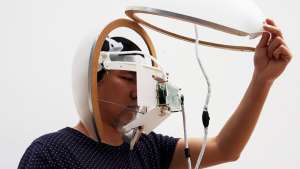From the Series
A recent graduate from the design interactions course at the Royal College of Art in London, multidisciplinary artist Naama Schendar looked into the effects of trauma in her thesis project Your Beautiful Self.
“I got interested in trauma because I got really interested in how trauma had affected my life,” explains Schendar, who was born in Israel.
The distance from her home and countrymen had left Schendar feeling helpless and her studies into trauma helped alleviate this feeling. Her project Your Beautiful Self is a film-based project that looks into whether or not you can induce feelings of empathy by mimicking a person's speech.
What if my perception of my self is really just a figure of speech, what if I can use the neuroplasticity of my brain to become other people - to truly become other selves.
This investigation into the perception of identity became her project brief. Schendar recorded the reports of people who had experienced trauma and trained herself to lip sync their words. It's kind of a cliche, she jokes, to talk in someone else's voice and walk in their shoes. But the deeper she got into the project the more she began to realise that it was not the words themselves that revealed the emotions that person experienced while recalling an experience, but the subtleties in between the words – where the person pauses, swallows, or clears their throat.
Schendar believes that designers can help people enrich their experience of life, by enhancing our abilities to see things from other perspectives.









